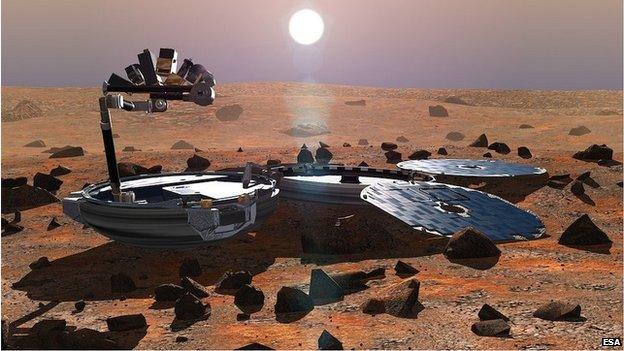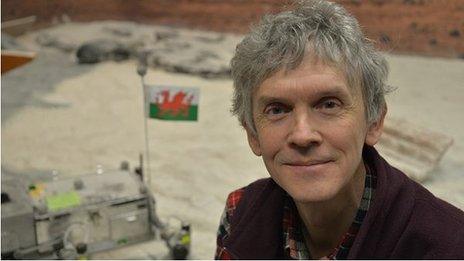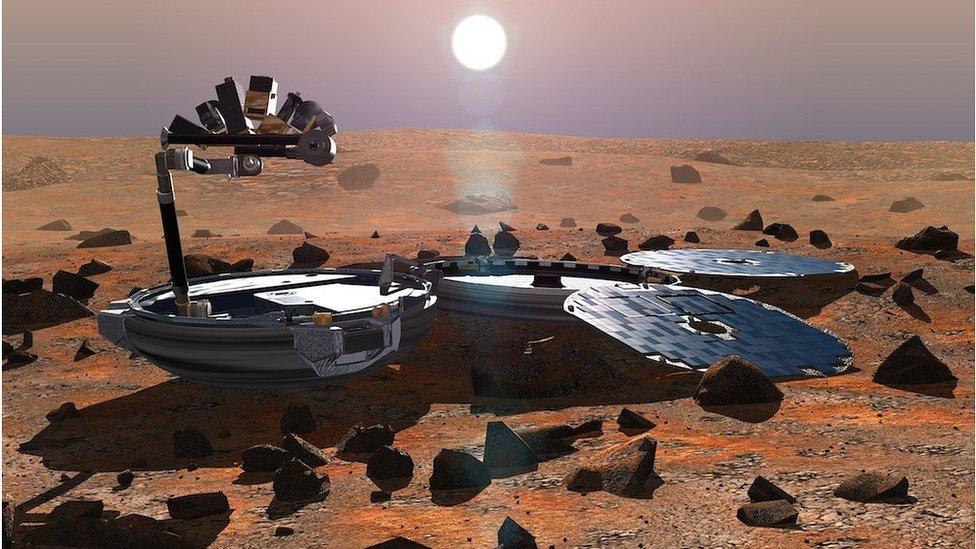Aberystwyth scientists help find missing Beagle 2 spacecraft
- Published

Beagle 2 descended to Mars in 2003 but failed to send a signal back to confirm it landed
Scientists at Aberystwyth University have helped in the discovery of the remains of a missing spacecraft on Mars.
The UK-led Beagle 2 Mars Lander was lost on Christmas Day in 2003, external during a mission to search for signs of life on the Red Planet.
But the discovery of its remains 11 years later proves it landed successfully.
Dr Laurence Tyler and Dr Matt Gunn helped map the area it was found.
The pair, who work at the university's Institute of Mathematics, Physics and Computer Science, were asked to provide detailed 3D images of the area where Beagle 2 was believed to have landed.
Using specialist computer software, Dr Tyler was able to provide a terrain map of the area from images taken by a camera on Nasa's Mars Reconnaissance Orbiter.

Dr Laurence Tyler was able to show the team searching for Beagle 2 that the area where it was supposed to have landed was very flat
Beagle 2 was led by Prof Colin Pillinger from the Open University, and Aberystwyth University space scientist Prof Dave Barnes helped develop the spacecraft's robotic arm.
Both died in 2014.
Dr Tyler said news of the discovery "brought a lump to his throat".
"I am very pleased to hear it sounds like Beagle 2 landed successfully but saddened that Dave is not around to see this," he said.
"He would have been absolutely thrilled that Beagle 2 landed safely and didn't just burn up in the atmosphere."
The robotic space craft descended to Mars from its mothership Mars Express in December 2003, but never sent back a radio signal to say that it had survived the landing.
Scientists tried to contact the probe, but never found out what went wrong.
The aim of its mission was to look for past or present life and see how mountains and rocks formed.
- Published16 January 2015
